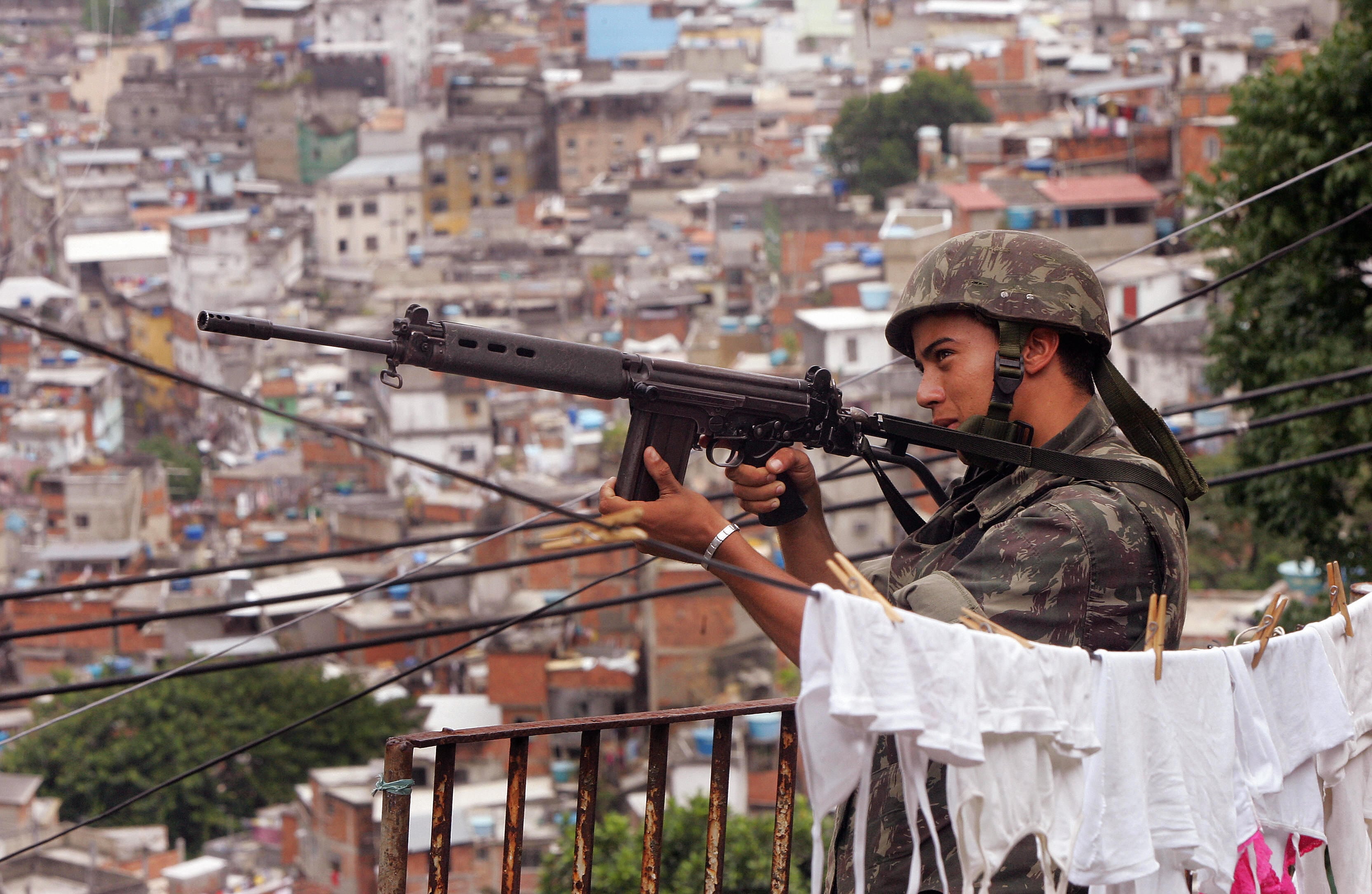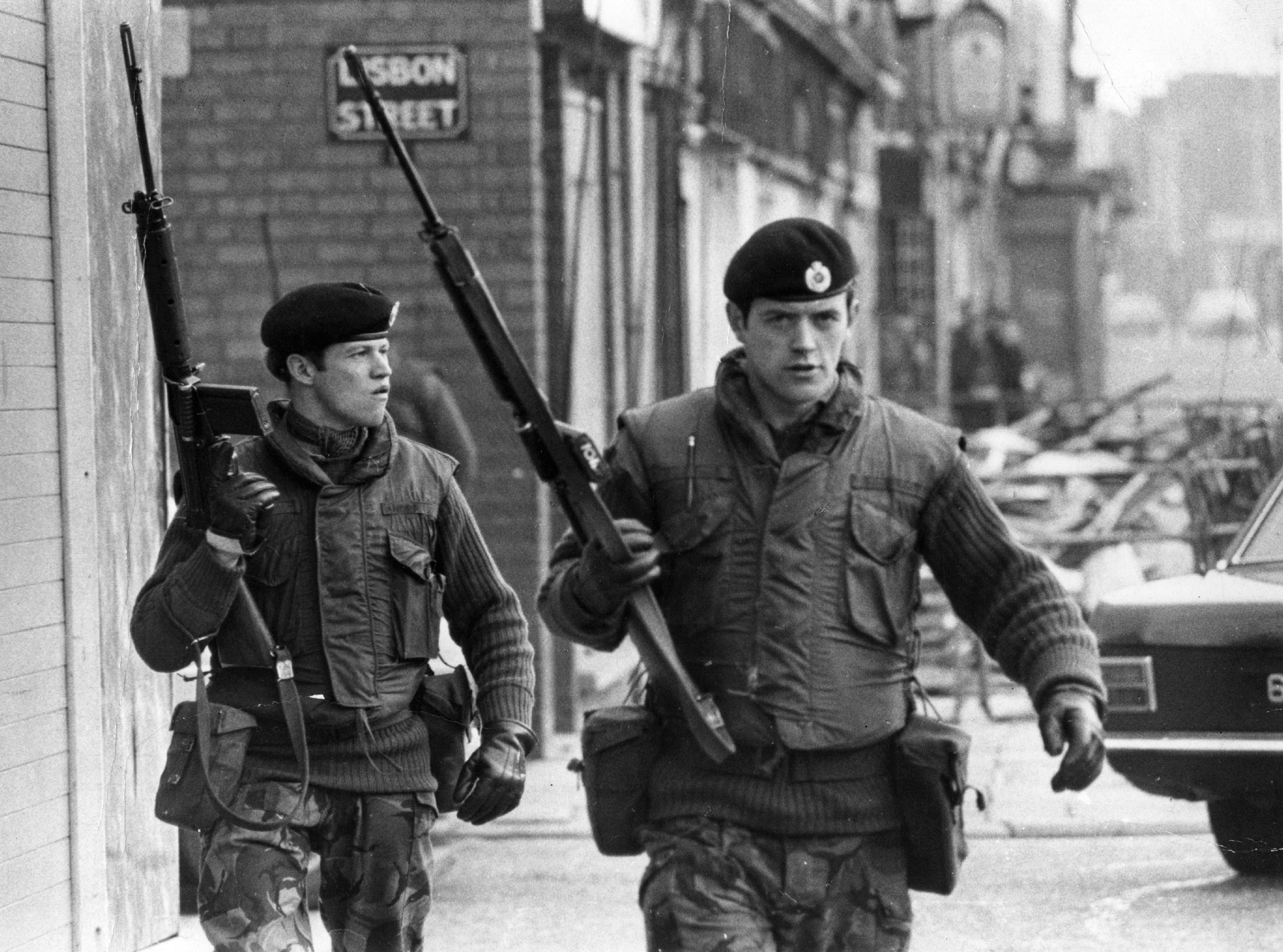After 1945 ushered in the Cold War with the Soviet Union and its allies, the North American Treaty Organization sought a rifle and a standardized projectile for the many nations under its alliance.
A major obstacle to the universality NATO desired was a balky U.S. Small Arms Development Branch, under Colonel René Studler, who was determined to make that universal weapon an American one. Basing his concept around a .30-06 round with a 51mm-long cartridge case in place of the M1 Garand’s 63mm cartridge, Studler set the Springfield Arsenal in Massachusetts to work on a “perfect” weapon for it.
Read More: How the M60 earned its nickname ‘The Pig’
Read More: This $10 submachine gun powered Britain’s covert ops in World War II
At the same time, the British were working on the EM-2 “Bullpup,” a compact rifle whose breech mechanism and magazine were contained in the stock rather than in front of it—doomed at the time, but destined to sire a later generation of British infantry arms.
Also working on a new semiautomatic file was Belgium’s Fabrique Nationale de Herstal (FN) in Liège, headed by Dieudonné Joseph Saive, former chief design assistant to FN’s founder, the late John Moses Browning.
FN’s prototype offered a good gas-operated, titling-bolt mechanism with a 20-round detachable box magazine. During trails at Fort Benning, Georgia, the FN entry made the best impression among U.S. Army officers — except for Col. Studler, still wedded to his pet project.
Studler did succeed in getting his 7.62x51mm round adopted as the official NATO cartridge in 1954 but the Belgians, hedging their bets, recalibrated their FN FAL (fusil automatique léger, or light semiautomatic rifle) and saw it adopted by all NATO countries but one: the United States.

Even after his retirement in 1953, Studler set in motion a chain of events that led to the weapon he’d championed to be adopted by the U.S. Army as the M14. The only other country to order the M14, however, was the Nationalist Chinese government on Taiwan, whereas some 90 armies around the work would adopt the FN.
This included the British Commonwealth, whose L1A1 SLRs (self-loading rifles) differed from the metric FN FALs in their use of .303 rounds.
Among the FN’s first users, the Canadians were favorably impressed with its simplicity and with how much quicker they could learn marksmanship and confidence in the weapon compared to the much-loved bolt-action Lee-Enfield No.4 Mark I rifle it replaced.
In addition to the C1A1 Inch-pattern semiautomatic variant, the Canadians adopted the heavy-barreled FALO (fusil automatique lourd, or heavy automatic rifle) as their squad automatic weapon under the designation of C2A1. British manufacturers were also producing L1A1s under license from 1957, although they preferred to keep the Bren gun over the heavy barreled FALO as their squad machine gun.
From 1985 onward, the British replaced the L1A1 with the SA80, a “bullpup” rifle derived from the too-ahead-of-its-time EM-2.
Variations on the FN appeared all over the world and were heavily engage in brushfire wars of the late 20th century from the Malayan Emergency to the Mau Mau revolt in Kenya to the Rhodesian war to India vs. Pakistan conflicts and numerous Middle Eastern conflicts, where sand proved to be a major Achilles’ heel for the FN until measures were taken to protect its mechanism from jamming.
Aside from that, virtually all soldiers who used the FN remember it fondly for its durability and reliability. Its effective range of 600 meters could be extended to 800 meters in expert hands, but it was never quite as steady a long-range firing platform compared to the M14. Neither the FN nor the M14 could maintain controllability when firing fully automatic because of the 7.62x51mm round and many FN license manufacturers dispensed with the full-automatic option entirely.
Vietnam saw its share of L1A1s in combat when Australian and New Zealand troops served there, most notably at the Battle of Long Tan on Aug. 18, 1966, in which 6th Battalion, Royal Australian Regiment defeated a Viet Cong regiment and at least a battalion of supporting North Vietnamese.
The standard issue of bayonets with the FN may have seemed anachronistic, but during the Falklands War cold steel’s psychological effect reasserted itself on the night of June 13-14, 1982, when a stalemate on Tumbledown Mountain was broken by a flanking maneuver and bayonet rush by 2nd Battalion of the Scots Guards to rout the Bataillón de Infanteria de Marina 5.
It may be noted that the only difference between infantry weapons on this occasion was that the British were armed with Inch-pattern L1A1 SLRs, while the Argentines were equipped with Metric pattern FN FALs.
Although phased out of use by NATO armies in the 1980s, the FN in all its variations and incarnations remain a pleasant memory among the veterans who wielded it. In armies throughout the Third World, most notably South and Central America, it remains in first-line service — and remains an effective, dependable weapon.





